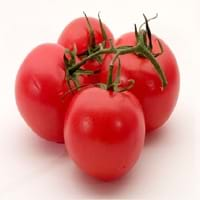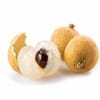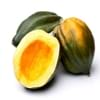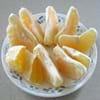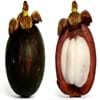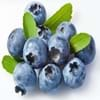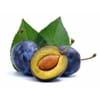Health Benefits
Good for diabetics, Improves well-being, Miraculin/miracle fruit makes sour things taste sweet
Anti depressant, Cancer prevention, Heart care, Muscle pain relief, Prevents constipation, Regulation of heart rate, Weight loss properties
General Benefits
Has taste modifying effect
Controls blood pressure, Eye care, Maintains healthy cholesterol level, Strengthens bones
Skin Benefits
NA
Anti-aging benefits, Heals sunburn, Skin rejuvenation, Treatment of acne, Treatment of skin diseases
Hair Benefits
NA
Good conditioner, Prevents hair loss, Softening mask
Allergy Symptoms
Itching, Skin rash
Anaphylaxis, Coughing, Diarrhea, Eczema, Hives, Itching sensation in throat, Nausea, Skin Rashes, Runny nose, Sneezing, Swelling of mouth, tongue or lips, Vomiting, Wheezing
Side Effects
Changes taste of food eaten after this fruit, Coagulation
Heart burn
Best Time to Eat
As a snack in the late afternoon, Eat the fresh ones, avoid mixing with any other foods, don't eat after meal., Morning time (before lunch)
Along with meal, Don't consume at night and before bed, Morning time (before lunch)
Protein to Carb Ratio
Not Available
Vitamin A (Retinol)
Not Available
Vitamin B1 (Thiamin)
Not Available
Vitamin B2 (Riboflavin)
Not Available
Vitamin B3 (Niacin)
Not Available
Vitamin B5 (Pantothenic Acid)
Not Available
Vitamin B6 (Pyridoxin)
Not Available
Vitamin B9 (Folic acid)
Not Available
Vitamin C (Ascorbic Acid)
Vitamin K (Phyllochinone)
Not Available
Lutein+Zeaxanthin
Not Available
Phytosterol
Not Available
Water Content
Not Available
Calories in Fresh Fruit with Peel
Not Available
Calories in Fresh Fruit without Peel
Not Available
Not Available
Calories in Frozen Form
Not Available
Calories in Dried Form
Not Available
Calories in Canned Form
Not Available
Calories in Juice
Not Available
Calories in Jam
Not Available
Calories in Pie
Not Available
Type
Berry
Berry, Fruit vegetable
Season
Monsoon
All seasons
Varieties
Gymnema Sylvestre and Thaumatococcus Daniellii
Better Boy, Early Girl, Beefsteak, Beefmaster, Pink Brandywinem, Caspian Pink, Thai Pinks, Hawaiian Pineapple, Kellogg’s Breakfast, Cherokee Purple, Black Ethiopian and Paul Robeson
Color
Dark red
Green, Orange, Pink, Purplish black, Red, White, Yellow
Inside Color
Greyish-white
Red
Taste
NA, Sweet
Sour, Sweet
Origin
West Africa
Central America, South America
Soil Type
Well-drained
Loam, Sandy loam
Climatic Conditions
Rainfall
Sunny, Warm
Facts about
- The name 'Miracle' because of the magical experience you get after eating it.
- When you have lemon after eating this fruit, it tastes sweet as if it is added with sugar.
- It is also used as natural sweetener.
- Around 10,000 varieties of tomatoes are grown in the world.
- In Buñol, people celebrate the Tomatina festival where around 1.5 lakh tomatoes are used.
- As per Guinness book of records, heaviest tomato weighed 3.51 kg.
Other Countries
NA
Brazil, Egypt, India, Iran, Italy, Mexico, Spain, Turkey, United States of America
Top Importer
Not Available
Nigeria
Top Exporter
United States of America
Netherlands
Botanical Name
Synsepalum Dulcificum
Solanum lycopersicum
Synonym
Miracle Berry, Miraculous Berry and Sweet Berry
Lycopersicon esculentum
Subkingdom
Tracheobionta
Tracheobionta
Division
NA
Magnoliophyta
Subclass
Asteridae
Asteridae
Family
Sapotaceae
Solanaceae
Species
S. dulcificum
S. lycopersicum
Generic Group
Not Available
Nightshade
Difference Between Miracle fruit and Tomato
We might think that Miracle fruit and Tomato are similar with respect to nutritional value and health benefits. But the nutrient content of both fruits is different. Miracle fruit and Tomato Facts such as their taste, shape, color, and size are also distinct. The difference between Miracle fruit and Tomato is explained here.
The amount of calories in 100 gm of fresh Miracle fruit and Tomato with peel is Not Available and 18.00 kcal and the amount of calories without peel is Not Available and Not Available respectively. Thus, Miracle fruit and Tomato belong to and category.These fruits might or might not differ with respect to their scientific classification. The order of Miracle fruit and Tomato is Ericales and Solanales respectively. Miracle fruit belongs to Sapotaceae family and Tomato belongs to Solanaceae family. Miracle fruit belongs to Synsepalum genus of S. dulcificum species and Tomato belongs to Solanum genus of S. lycopersicum species. Beings plants, both fruits belong to Plantae Kingdom.

